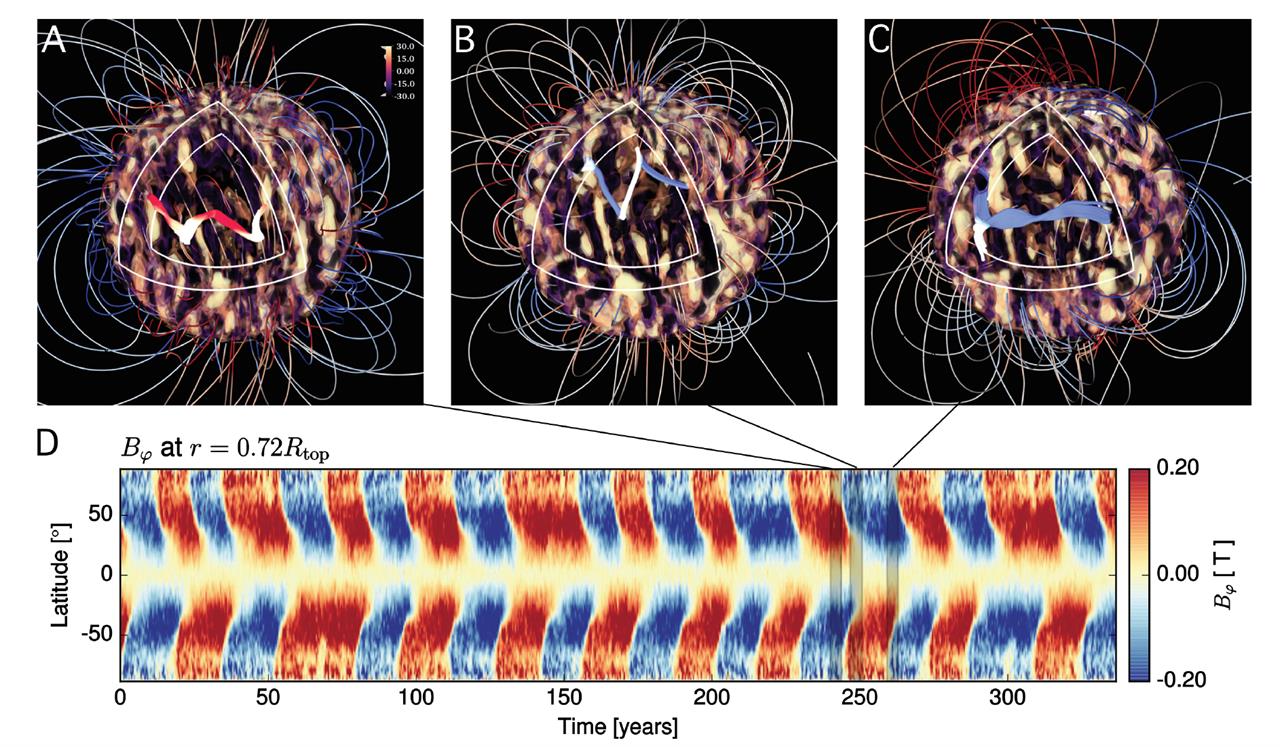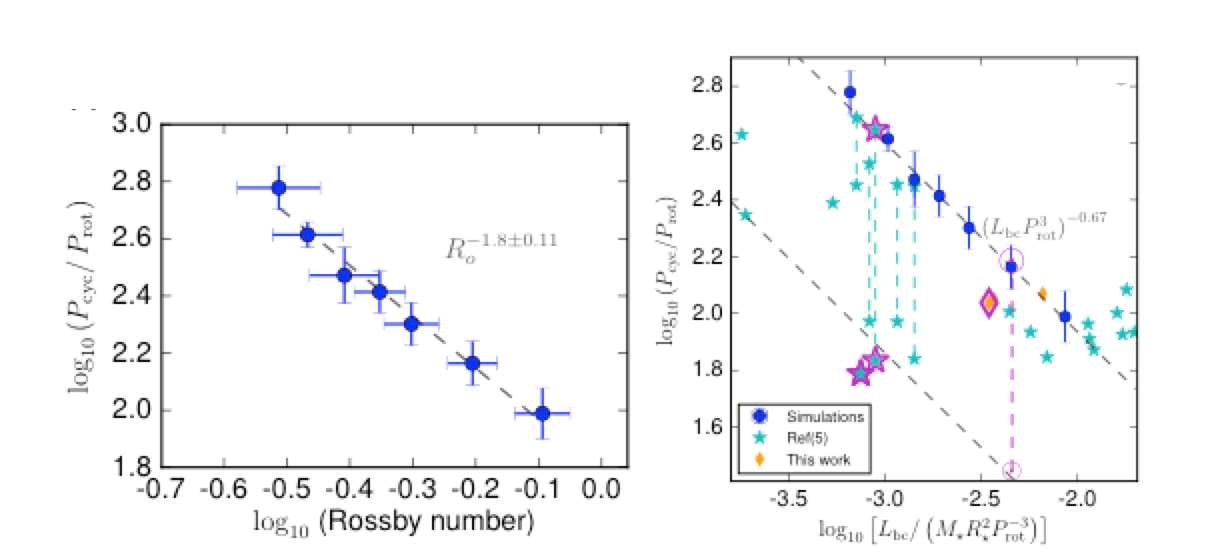Convective turbulent motions of the conducting fluid inside a star induce magnetic fields (dynamo1 effect). The Sun's magnetic field reverses every eleven years, a phenomenon which is accompanied by highly energetic, eruptive phenomena which can harm electrical and communications systems on Earth and satellites. Other stars also have magnetic cycles which range in length from a year to several decades.
The strength of self-consistent simulations
In physics, a self-consistent simulation, or ab initio model, guarantees a model based on the first principles of physics without any ad-hoc parameterization. In particular, the magnetic fields and the flows inside the star evolve here in a joint way and are interdependent, allowing the researchers to highlight this new mechanism at the origin of the stellar magnetic cycles.An international collaboration that includes the CEA, the CNRS and the Université Paris Diderot2, the Harvard-Smithsonian Center for Astrophysics and the University of Montréal carried out a 3D simulation of interiors of stars similar to the Sun to explain the origin of their magnetic field cycles.
The scientists have identified a strong back-reaction loop between the magnetic field of a star and the flows which animate it, including an important "internal rotation profile". The temporal variations of this rotation ultimately determine the cycle period. The discovery of this scaling law for the stellar magnetic cycle period using self-consistent turbulent 3D simulations is unprecedented. The results, which were obtained using the GENCI, PRACE and ComputeCanada computing centers, will be published in Science.
The simulations of the magnetism of solar-type stars contribute to the preparations for space missions including ESA's Cosmic Vision Solar Orbiter and PLATO, whose launches are respectively planned for 2018 and 2024. They offer a new theoretical interpretation of stellar magnetic cycles and put the study of the Sun back at the center of our understanding of stellar astrophysics.
1 The dynamo effect consists in the spontaneous generation of a magnetic field in a moving conducting fluid.
2 In the Laboratoire Astrophysique, instrumentation, modélisation (AIM) at Paris-Saclay.
3 I.e., along the meridians.
4 I.e., along the parallels.
5 The Rossby number represents the ratio between the inertial forces and the Coriolis force that acts on a fluid in a rotating reference frame. A small Rossby number indicates a situation in which the effect of the rotation (Coriolis) is more important than fluid advection, as in the case of global ocean circulation on Earth.
A fundamentally non-linear dynamo
Inside the Sun, the conducting fluid, in addition to large-scale movements, is also characterized by a multi-scale turbulent flow due to the convective instability. It is located in the outside spherical shell of the Sun, from 0.7 solar radius to the surface. Both types of flows, from large to small scales, play an essential role in the periodic restructuring of the magnetic field through their poloidal3 and toroidal4 components. A complex mechanism, which is now well understood, can be used for “self-maintenance” of a large-scale global magnetic field. In certain cases, as with the Sun, this global magnetic field oscillates over a ten-year period. With the simulations, the researchers were able to demonstrate that the star's rotation influences the efficiency of the (non-linear) energy transfer between certain large-scale flows and the magnetic field. This phenomenon ultimately determines the cycle period, which decreases with the dimensionless Rossby number that is commonly used in geophysical fluid dynamics5.

Longitudinal magnetic field as a function of latitude and time at the base of the convection zone. The magnetic field changes sign periodically and oscillates between symmetrical (same sign on both sides of the equator, e.g. between 10 and 140 years) and anti-symmetrical (opposite sign with regard to the equator of between 240 and 320 years) phases. © DAp/CEA-AIM-Université de Montréal.
Magnetic cycle of Sun-type stars
Using different observation programs, researchers now have data about the length of magnetic cycles of Sun-type stars, whose luminosity is often known to a good degree of accuracy, in addition to their rotational and magnetic cycle characteristics. By observing more and more stars, astrophysicists hope to refine this new scenario of the origin of stellar magnetic cycles.

Ratio of the magnetic cycle period to the rotation period of the star as a function of the Rossby number in turbulent 3D simulations (left). A power law decreases with the Rossby number results from the strong non-linearity of the dynamo operating in these simulations. On the right, the same ratio is shown as a function of star luminosity (normalized to the period of rotation of the star). This diagram includes the Sun (magenta circle with a point at its center) and other Sun-type stars (cyan stars and orange diamonds) for which a magnetic cycle was observed. The solar twins are highlighted in magenta. The simulations (blue disks) cross the solar point without parameter adjustment. The vertical dashed lines indicate stars possessing two magnetic cycle periods.
© DAp/CEA-AIM-Université de Montréal